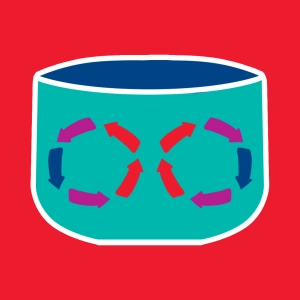 Convection cells
Convection cells
When a fluid (liquid or gas) is heated, it expands and becomes less dense. If the temperature is not uniform in the fluid, then it undergoes local movements: the cold, dense regions tend to pass under the warm, less dense. The force responsible for this movement is the buoyancy.
On a larger scale, convection loops occur. They are represented by moving circles on this animation, but their shape and size vary widely.
